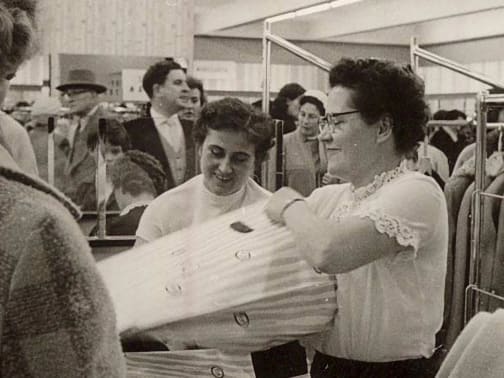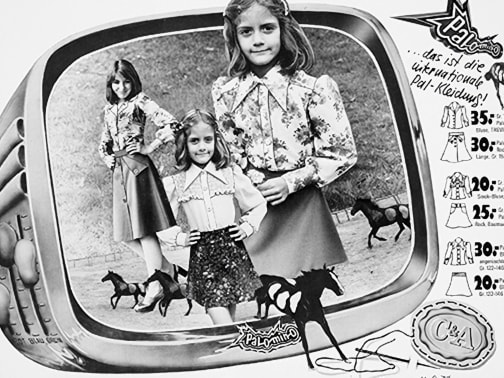Throughout the 17th and 18th centuries, the ancestors of the C&A founders were already exploring new ideas to meet the needs of their customers.
From the small German town of Mettingen near the border with the Netherlands, Clemens and August’s ancestors had long been successful traders in northern Holland, leaving the family farm in 1671 to sell their wares as travelling linen merchants. It was in Mettingen in the 1830s that Clemens and August were apprenticed as little more than boys to learn their trade.

Democratizing fashion
In the 19th century at the height of the industrial revolution, C&A revolutionizes an industry and creates a new market of vast potential by offering affordable fashion.
In 1841, the two serious-minded brothers, still only in their early 20s and armed with a loan from their father, founded their own linen and cotton fabric business – C&A Brenninkmeijer – in the town of Sneek. Living above the stockroom, they served the local community, carrying their quality wares from farm to farm. Hardworking and principled, the young men earned reputations as trustworthy and reliable. Needing to establish a retail location in town, the first store was opened in 1860 – marking the beginning of C&A as we now know it. The rest, as they say, is history.
The advent of the sewing machine brought with it an era of ready-to-wear clothes, and C&A soon offered these in a range of different sizes. This concept proved extremely popular with customers.
A new store opened in nearby Leeuwarden in 1881, then another in Amsterdam in 1893. A second shop in Amsterdam followed in 1896.
By this point Clemens and August had passed the business on to the next generation, who now contributed their own entrepreneurial ideas, selling ready-made ladies’ coats at the cost of a worker’s average weekly wage. This may sound expensive today, but it was only a third of the price of the cheapest coat then sold by other shops.

C&A achieves further milestones
By the start of the 20th Century, the foundations had been laid for C&A to play a major role in making the latest fashions accessible and affordable.
The working and growing middle classes were demanding more choice and, using new production techniques and taking only a small profit per piece, C&A was able to offer ready-made fashion to a much larger proportion of the population who, until then, had not been able to afford it.
Innovation was relentless, and the company pioneered the use of advertising and introduced the customer-friendly ability to return goods. Even though the margins were small, volumes were high and profits were reinvested into the business, allowing it to grow.
It wasn’t long before the creative formula that was democratizing fashion in Holland started working just as well in Germany. A grand C&A store was opened on Berlin’s Alexanderplatz in 1911, launching C&A Germany in the process.
Creativity remained important and customers saw the introduction of innovations such as self-service, mechanical cash registers, escalators and all manner of modern convenience. And of course, always the greatest choice of fashion at unbeatable value.
The path of progress hasn’t always been smooth, however, and the company has faced many challenges over the years. After the Second World War, for instance, the focus was on rebuilding the business, which in Germany had been largely destroyed. Thankfully the post-war economic growth meant that recovery was swift, and building on its heritage of ingenuity, creativity and passion, C&A was able to grow to become one of Germany’s largest retailers.
The following decades saw C&A expand throughout 20 European countries, as well as in the Americas (Brazil and Mexico) and Asia (China).